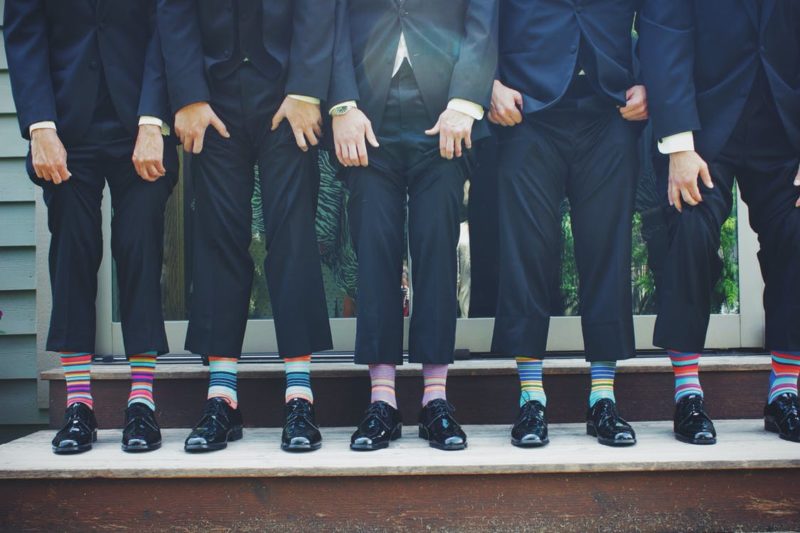The Intersection Between Capitalism and Philanthropy: How Bombas was Created
The Intersection Between Capitalism and Philanthropy: How Bombas was Created https://csuiteold.c-suitenetwork.com/advisors/wp-content/themes/csadvisore/images/empty/thumbnail.jpg 150 150 jeffreyhayzlett https://secure.gravatar.com/avatar/7d20a01ed9c1d91ad616e067720c7767?s=96&d=mm&r=g
What do you think is the most requested item is at homeless shelters?
Shoes? No.
Pants? No.
Underwear? Close. It’s the second most requested.
Give up?
It’s socks.
That surprised me.
It also surprised David Heath so much, he built a business around it.
You might not recognize David’s name, but I’m sure you’ve heard of the company he co-founded, Bombas. You can’t listen to a podcast or go anywhere on the internet without seeing their ads and products featured.
David is quite the entrepreneur, with two successful exits prior to launching his current company. In fact, he was working another job when he stumbled upon the idea for Bombas on social media.
“I was scrolling Facebook one day while I was at work and I came across this post on my feed that said socks are the most requested clothing items at homeless shelters,” David said. “I thought ‘huh, I didn’t know that.’ I would have thought it was coats or jeans or sneakers.”
“Here’s an item of clothing I never spend more than a few seconds a day thinking about and it’s perceived as a luxury item for over 600,000 people living right here in the U.S. I just couldn’t shake it.”
He is not far off with the numbers. According to the 2020 Annual Homeless Assessment report to Congress, there are 580,466 people that have experienced homelessness in the U.S. on a single night in 2020.
This is when David decided Bombas would be a part of the one-for-one movement — a business model where pro-profit companies have built in philanthropy. For Bombas, it was to give away a pair of socks for every pair sold.
To date, Bombas has donated over 50 million pairs of socks through more than 3,500 giving partners scattered across all 50 states.
All this business and community success comes from a product most of us don’t normally think twice about. Even David admits, he didn’t think much about the undergarments industry until starting Bombas, but one thing he did know was the existing brands weren’t exciting.
“We see ourselves as being the Starbucks of the basics, inner wear category,” David says. “As Starbucks is to Maxwell House, we are to Hanes. Yes, it costs two to three times more per product, but the product and experience are so much better than what you’d expect from one of those other brands.”
This even led to a very successful and clever marketing campaign for the “greatest sock never sold” touting the Bombas donation sock.
“Why would you go out with a marketing campaign, spend money talking about a sock you don’t sell?” David asked.
While that question seems obvious to anyone in business, David says the groundwork leading up to the campaign started with a promise that, let’s just say was about to be written in permanent ink.
“Before we even launched the company, I remember sitting across the table from Randy (Goldberg), who’s one of our co-founders and I said ‘you know what? If we ever donate a million pairs of socks, I will tattoo the Bombas logo on me,” David said. “I kind of said it as a lark. A million pairs? We hadn’t sold one! I thought people would forget about it. We did it in two years.”
A good business never misses an opportunity for great promotion. In 2016 to capitalize on million pair goal, Bombas created a viral video campaign centered around David’s tattoo – which kicked off a personal trend for David.
“I didn’t have any tattoos and here I am seven years later, I got the bug and I’ve got 10 or 11. It is a slippery slope once you get one,” he said.
Trips to the tattoo parlor aside, that campaign lead the company decided to celebrate other million sock milestones.
“We did five million pairs. When we got to ten million, we decided that we can’t keep telling the same story,” David said. “We decided ‘Okay, what if we talk about our donation sock’?”
When Bombas started, it was donating the same socks you or I would buy. However, they kept hearing from the organizations they worked with that homeless people had different sock needs. The team at Bombas went to the drawing board and re-engineered their signature socks. They came up with a sock in darker colors to cover up wear, designed them with thicker seams so they last longer and added a special anti-microbial coating.
Bombas was following a tried-and-true rule of business: responding to customer needs — even if we’re not talking about customers in the traditional sense.
David says Bombas isn’t stopping at just socks. They expanded its product lines to offering underwear and t-shirts, keeping with the one-for-one philosophy. Soon, Bombas is planning to commission an independent study to see how many homeless shelters there are in the United States and find out which items are in demand.
“We don’t really have the sense (of what’s needed) at what volume. Is it 50 million? 100 million? 500 million?” David said. “We want something where we can measure our impact and say we’re delivering 50% or 10% (of what’s needed). We want to know where we stand in that paradigm. So, as we grow our business, we will know what’s the 4th most, the 5th most, 7th most, 12th most (in demand item) and start to build a strategy around our giving.”
Bombas is a company with the right strategy. A great mix of capitalism and compassion that corporate America could use more of in my opinion. They’ve made strides in that direction, but those who can, should.
David and I talked about a lot more than just Bombas’ mission during our discussion. We cover a lot about the business and what’s next.
Listen to our full conversation here.


